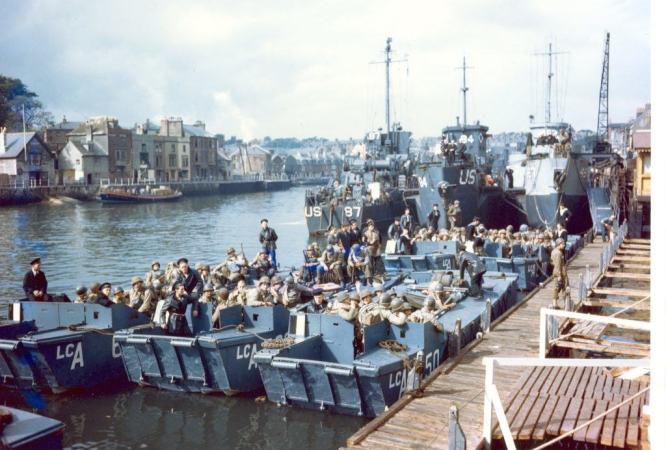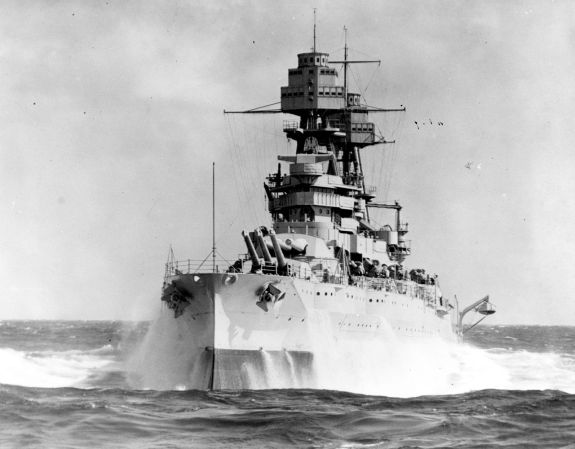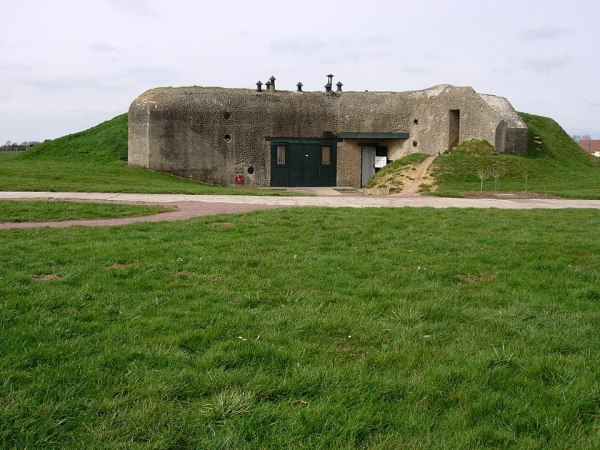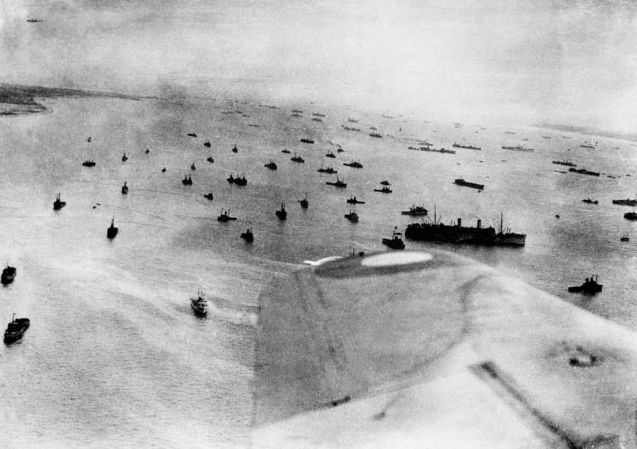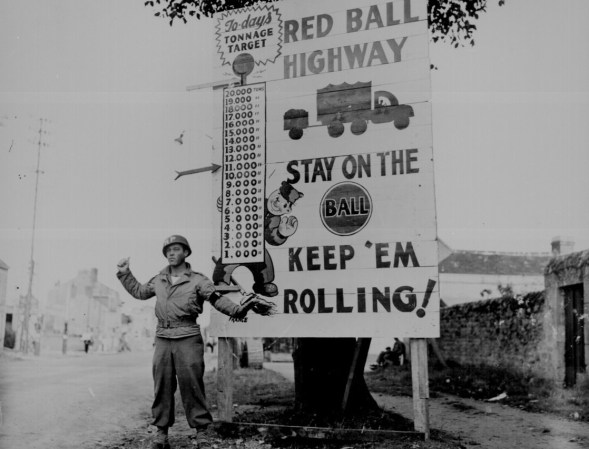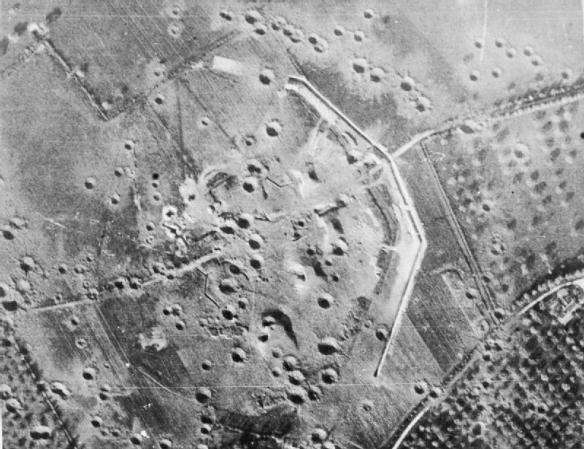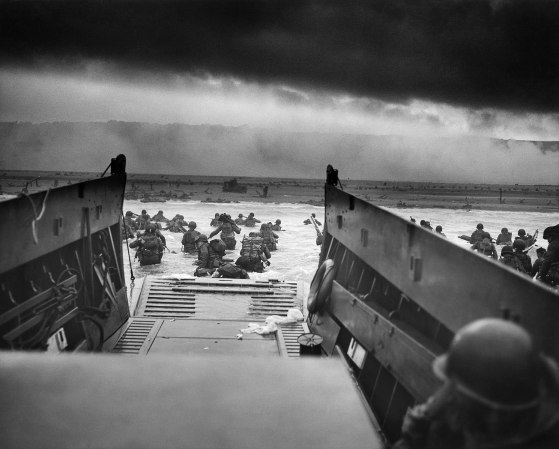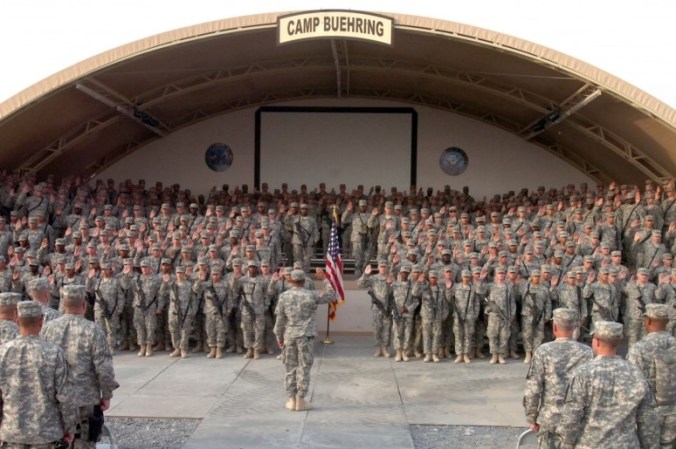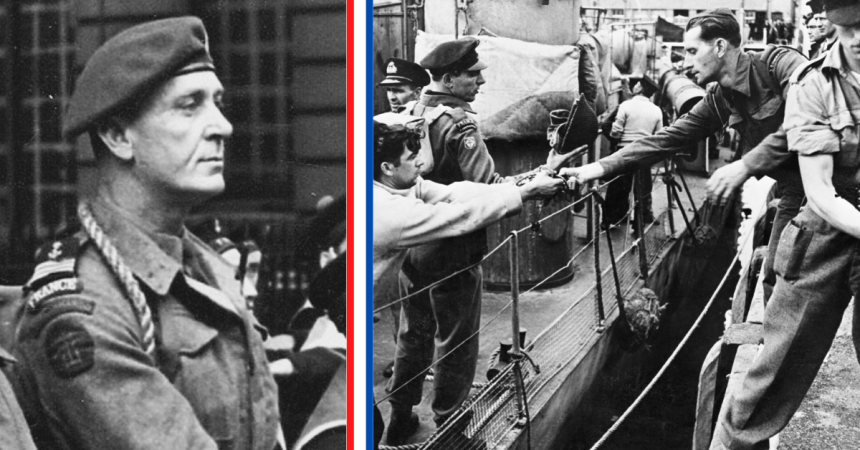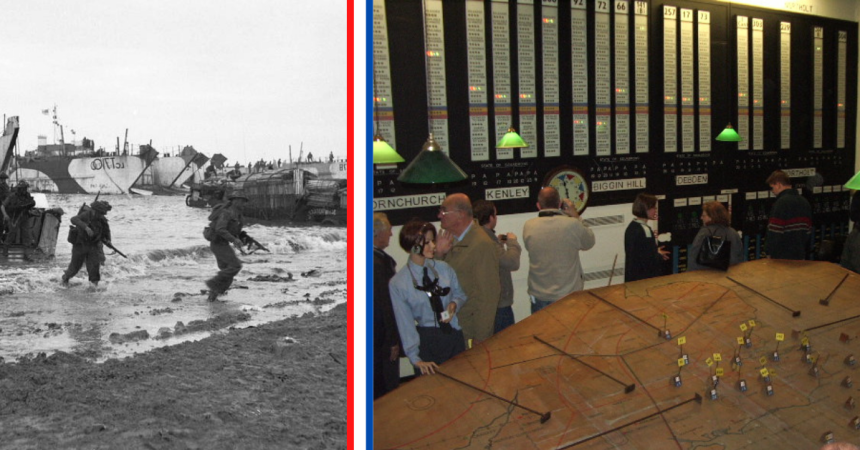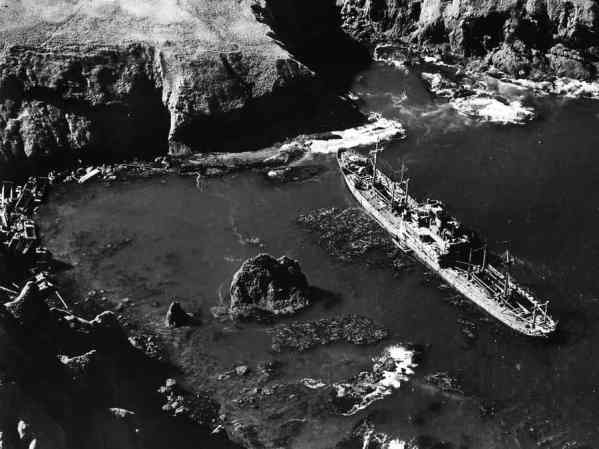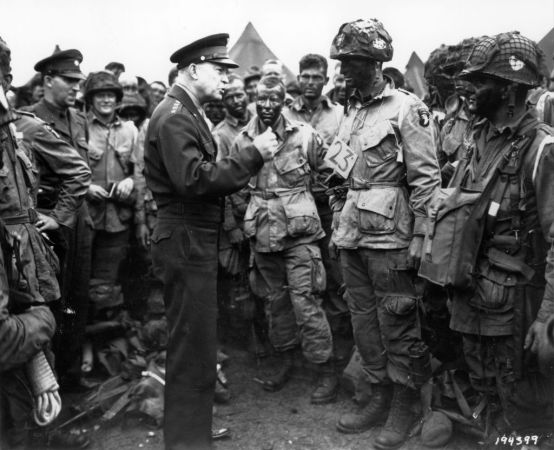There was a reason that the Nazis thought the original D-Day invasions were a feint: Aside from the misdirection operations conducted by the Allies, the geography of the beaches made it seemingly impossible to fully supply a large invasion force.
It was seemingly impossible, even with landing ships and Higgins boats, to move enough beans and bullets over the sands.

A line of U.S. Liberty ships deliberately sunk off the coast at Omaha beach to form a breakwater for the Mulberry harbor there.
(U.S. Army)
But the Allies had a secret. They didn’t need to fully supply the invasion for months using only the landing craft, and they didn’t need to race to a port and try to wrest it from fierce defenses. Instead, they had a plan to build their own port, complete with two man-made harbors, in a matter of days just after D-Day. These “Mulberry harbors” would tip the logistics battles in favor of the landed forces.
The inspiration for Mulberry harbors came from the failed Dieppe Raid, which pitted about 6,000 troops against the heavily defended port at Dieppe, France, and resulted in 2,000 Canadians being taken prisoner.
The Allies realized that taking a deepwater port would be a tall order. While the plan for Operation Overload included a follow-on operation against the port of Cherbourg, to be completed in eight days, military planners realized they needed a Plan B.

A sectional concrete breakwater for the Omaha Beach breakwater is floated towards the French shore, June 1944
(U.S. Navy)
That Plan B ended up being Mulberry harbors, sort of the Ikea solution to deepwater ports. The British needed eight months to build the concrete sections and prepare them for deployment. On June 6, when they got the word that the landing forces were likely to succeed in taking the assigned beaches, a fleet of ships took off towards France carrying these concrete sections.
But the British engineering plan was ambitious. It called not just for a few large piers, but two entire artificial harbors. For those who aren’t familiar with naval activities, this meant that the engineers had to construct what was, essentially, a massive horseshoe stretching hundreds of feet into the ocean to shelter the piers from the worst ocean currents.

The Mulberry artificial harbor at Arromanches, France, September 1944.
(British Army Sgt. Harrison)
Each harbor had multiple piers with a combined length of six miles. The concrete caissons that made up the piers required 330,000 cubic yards of concrete, 31,000 tons of steel, and 1.5 million yards of steel shuttering.
When the call came to begin construction, the ships took off across the channel and began placing gear in position. Some older ships were deliberately sunk to help form the breakwaters, and the piers were ready to receive supplies a shocking three days after the invasion began.

But it was hardly a charmed undertaking. The American forces controlled one harbor and the British, Canadian, and Free French forces controlled the other. The British piers were anchored to the seafloor, but the American ones were not, and a June 19 storm demolished the American harbor.
According to an article by Michael D. Hull on Warfare History Network:
The Americans’ harbor was harder hit than Port Winston. The Utah Beach Gooseberry lost several blockships that were torn open, and the Mulberry harbor off St. Laurent was devastated. The breakwaters were overwhelmed by waves, two blockships broke their backs, and only 10 out of 35 Phoenix caissons remained in position. The piers and bombardons were wrecked, and the harbor was eventually abandoned. When the gale finally blew itself out on June 23, Lt. Gen. Omar N. Bradley, commander of the U.S. 12th Army Group, went down to the beach to see the damage for himself. “I was appalled by the desolation, for it vastly exceeded that on D-Day,” he said.

This was a huge problem because Cherbourg — slated for liberation on June 21 — was still in German hands. The decision was made to shift what pieces were still functional in the American harbor to the British one and shut down the U.S. effort, doubling the necessity of taking the French port.
While Cherbourg would end up being the greater logistics hub for the Allies through the conclusion of the war, it was the Mulberry harbors that kept Allied logistics alive long enough for Cherbourg to fall. At the height of their use, the Mulberry harbors moved 12,000 tons of cargo and 2,500 vehicles a day.
The harbors were designed for 90 days of hard use, but the British installation actually functioned for a full eight months. The American harbor was used, without the broken piers, for most of the rest of the war as well.




